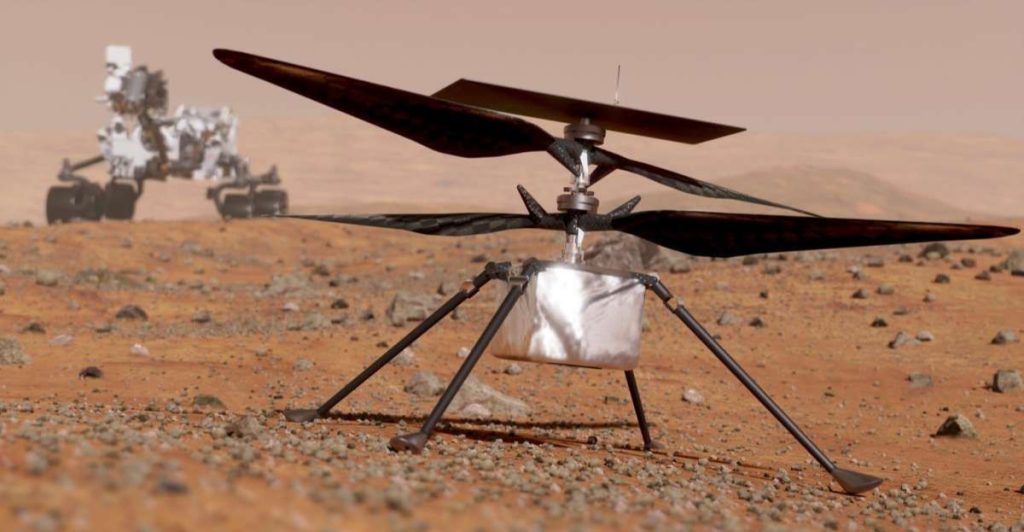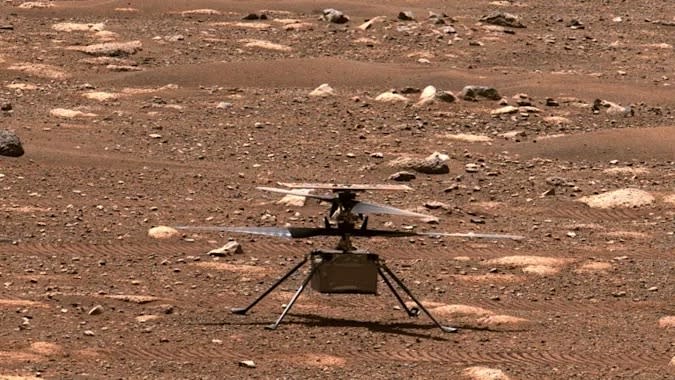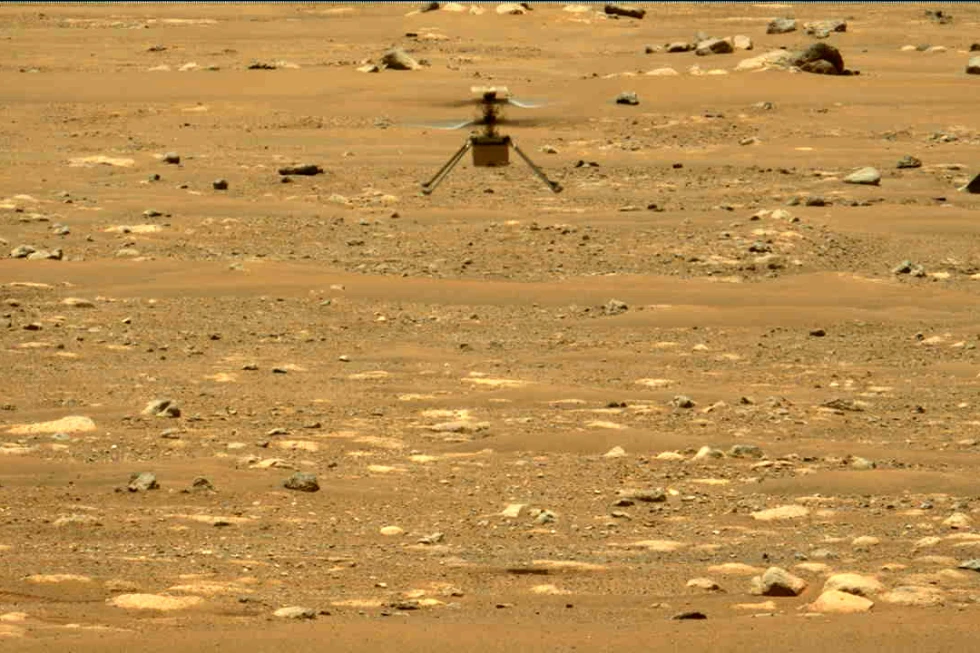The recent announcement by NASA regarding the conclusion of the Mars helicopter Ingenuity’s mission marks the end of an extraordinary chapter in the exploration of the red planet.
The 4-pound marvel, aptly named Ingenuity, has captivated the world with its remarkable achievements and resilience.
In this essay, we will delve into the significance of Ingenuity’s mission, its impact on space exploration, and the valuable lessons it has imparted to the scientific community.
From its inception as a short-term technology demonstration, Ingenuity surpassed all expectations by conducting an impressive 72 flights over the span of three years on the Martian surface.
Despite its diminutive size, this little helicopter has left an indelible mark on the history of space exploration.
It has covered a distance of 11 miles, exceeding the original planned distance by more than 14 times, and reached heights of up to 79 feet, showcasing its agility and maneuverability in the thin Martian atmosphere.
The news of Ingenuity’s grounded status due to rotor blade damage may come as a disappointment, but it does not overshadow the significance of its accomplishments.
The fact that it remained upright and in communication with flight controllers even after the cessation of its flights is a testament to the robustness of its design and the expertise of the team that operated it from millions of miles away.
Ingenuity’s mission has provided invaluable insights and data that will inform future endeavors in Martian exploration. Its successful deployment and operational capabilities have paved the way for the development of more advanced aerial vehicles for planetary exploration.
The challenges encountered by Ingenuity have also shed light on the harsh conditions of the Martian environment, informing engineers and scientists about the intricacies of designing and operating machinery in such an alien landscape.
The data gathered by Ingenuity during its flights, including high-resolution images and environmental observations, has contributed significantly to our understanding of the Martian terrain and atmosphere.
These observations will aid in the planning of future missions, including the selection of landing sites and the identification of areas of scientific interest.
While Ingenuity’s active flights may have come to an end, its legacy will endure as a symbol of human ingenuity and perseverance.
Its groundbreaking achievements have inspired a new generation of scientists, engineers, and space enthusiasts, demonstrating the boundless potential of technological innovation in unraveling the mysteries of the cosmos

In conclusion, the conclusion of Ingenuity’s mission is not the end, but rather the beginning of a new chapter in the exploration of Mars and beyond.
Its legacy will continue to inspire and inform future missions, serving as a testament to the power of human creativity and determination in the pursuit of knowledge. Ingenuity has proven that even in the harsh and unforgiving environment of Mars, human innovation knows no bounds.
As we bid farewell to this remarkable little helicopter, we eagerly anticipate the next milestones in our quest to unravel the secrets of the universe.
It is with a heavy heart and a sense of inevitability that we must announce the end of the mission. The decision to bring this chapter to a close has not been an easy one, and we are acutely aware of the disappointment it may bring to those who have followed and supported the mission.
However, we take solace in the fact that the mission has far exceeded our expectations. The achievements and discoveries made throughout its duration have been nothing short of remarkable, and it is almost an understatement to say that it has surpassed expectations.
The knowledge gained and the advancements made will undoubtedly leave a lasting impact on our understanding of the universe and our place within it. While the end of the mission may be bittersweet, we look forward to the new opportunities and discoveries that lie ahead.
The successful deployment of Ingenuity, the helicopter that hitched a ride on NASA’s Perseverance rover and landed on Mars in 2021, marked a significant milestone in the exploration of the Red Planet.
Serving as a pioneering scout for the rover, Ingenuity achieved the remarkable feat of demonstrating powered flight in the thin Martian atmosphere, a groundbreaking accomplishment that has captured the imagination of the scientific community and the public alike.
However, recent images transmitted from its final flight have revealed a setback for Ingenuity. It has been reported that one or more of its rotor blades sustained damage during landing, potentially impacting the surface in the process.
Regrettably, these blades are no longer operational, as confirmed by NASA. This development has raised questions about the durability and resilience of the technology required for aerial exploration in the challenging Martian environment.
During its final flight, Ingenuity ascended to an impressive height of 40 feet (12 meters) before briefly hovering and subsequently descending.
However, the mission took an unexpected turn when the helicopter lost communication with the nearby rover, which served as its essential communication relay, while hovering just 3 feet (1 meter) above the ground.
Although communication was eventually restored, the damage to the rotor blades was subsequently confirmed.
The circumstances surrounding the loss of communication are currently the subject of a thorough investigation, as NASA seeks to understand the factors that led to this unexpected turn of events.
Despite these challenges, the success of Ingenuity has not gone unnoticed. In fact, its groundbreaking achievements have spurred NASA to make plans for the inclusion of two mini helicopters in a future Mars mission scheduled for 2022.
This decision underscores the significance of Ingenuity’s accomplishments and the potential for further advancements in aerial exploration on Mars.
The developments surrounding Ingenuity serve as a reminder of the inherent risks and complexities associated with space exploration, particularly in the context of pioneering missions to distant celestial bodies such as Mars.
The harsh and unforgiving Martian environment presents formidable challenges for the deployment and operation of sophisticated technology, as evidenced by the damage sustained by Ingenuity’s rotor blades.
These challenges underscore the need for robust and resilient engineering solutions that can withstand the rigors of extraterrestrial exploration.

In conclusion, while the recent setbacks encountered by Ingenuity are undoubtedly disappointing, they also serve as valuable learning opportunities for future missions to Mars and beyond.
The resilience and ingenuity displayed by the scientific and engineering teams involved in the Mars exploration program are a testament to the unwavering commitment to pushing the boundaries of human knowledge and technological capability.
As we look to the future, the legacy of Ingenuity will continue to inspire and drive the pursuit of new frontiers in space exploration, paving the way for further discoveries and advancements in our understanding of the cosmos.
In summary, the journey of Ingenuity on Mars has been a testament to human innovation and perseverance, and its legacy will undoubtedly endure as a symbol of the indomitable spirit of exploration and discovery.
